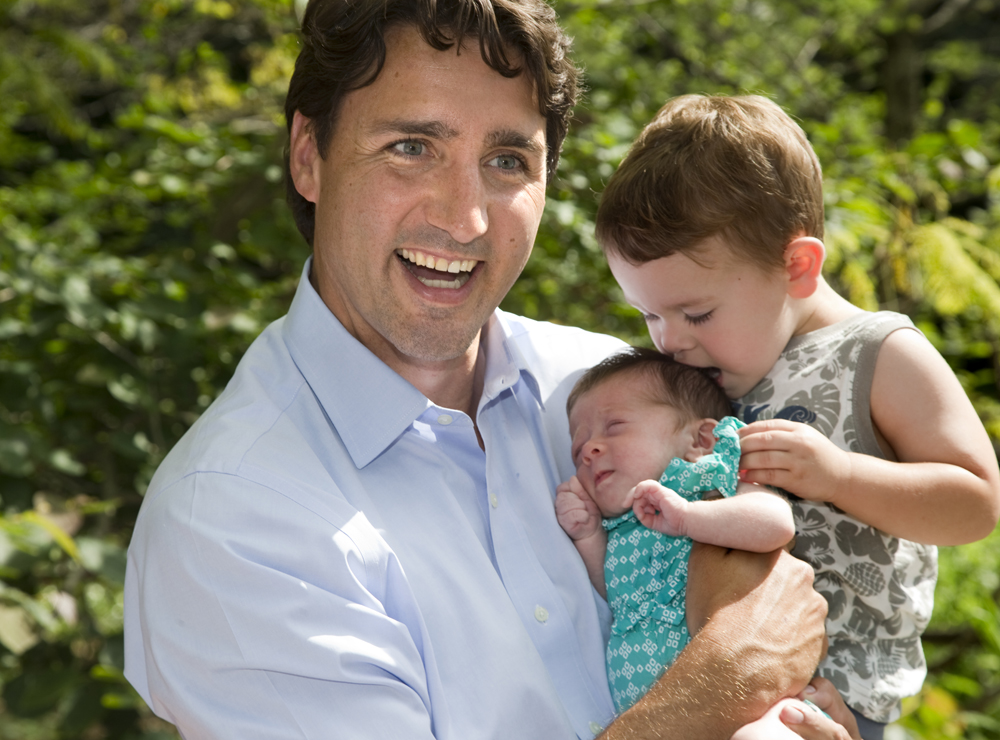Andrew Scheer now says he’d need two terms to balance the budget, rather than two years, and the broken promise is all the Prime Minister’s fault.
“When I became leader, he was only a year into his deficit spree,” Scheer
said at around the 12-minute mark of a speech to the Canadian Club in Vancouver on May 24. “Since that time, his spending has become even more reckless,” the Opposition leader continued. “All of this has made it impossible for anyone to immediately and responsibly balance the budget in the very short term. Even the most optimistic projections don’t have the Liberals balancing the budget for 20 years, meaning the Liberals would add to the debt every year for the next two decades.”
The most optimistic projections have become a lot more optimistic since Scheer delivered that speech.
On June 20, the Parliamentary Budget Officer released his baseline projections for the election campaign, predicting a balanced budget in 10 years, not 20. Earlier this month, the Department of Finance published its latest Fiscal Monitor, which estimates the deficit in the fiscal year that ended March 31 was about $12 billion, less than the shortfall of about $15 billion predicted in the March budget. And on July 31, a couple of Bank of Nova Scotia economists said that if no new spending occurred, revenue growth would balance the budget within three to five years.
What happened? Finance could be struggling to get a handle on how much money it should expect the Canada Revenue Agency to collect on its behalf. The CRA has been cracking down on avoidance and evasion, and fatter coffers could be a sign of success.
Also, Canada’s economy continues to confound. Growth essentially stalled over the winter, suggesting a grim harvest for tax collectors. However, the things that drive revenue — employment and corporate profits, mostly — held up well. Statistics Canada reported on July 31 that gross domestic product rose 0.2 per cent in May, the third consecutive monthly gain. The rebound is on.
Another possibility is that Finance is being deliberately conservative with its forecasts. There is precedent for that. Boomers and Gen-Xers might recall all of the “surprise” surpluses that Paul Martin reaped on his way to erasing a generation of deficits during his tenure as finance minister two decades ago.
Those memories bring us to the reason for this column. Scotiabank’s research on how easily the budget could be balanced reframes the political debate over fiscal policy: the Conservatives are grossly exaggerating the messiness of Canada’s finances, while Liberal budget forecasting probably is denying us an opportunity to have a proper discussion about how to exploit a rare combination of strong revenue and low interest rates.
Rebekah Young, Scotiabank’s director of fiscal and provincial economics, and Marc Desormeaux, an economist who focuses on the provinces, noted the tendency of finance ministers to “under-promise, over-deliver,” and acknowledged that prudence has merit, given what the trade wars could do to global economic growth.
“But an exclusive focus on the downside comes with its own risks,” they wrote. “Windfalls take the system by surprise, often resulting in a high propensity to spend this ‘found money.’ With little time to consider its best use, timeliness can trump other policy objectives when the year-end is fast approaching.”
Young and Desormeaux ran the numbers on three scenarios and reckon the federal government could reasonably expect additional revenue of $6 billion to $18.5 billion over the next couple of years. That would be enough to effectively erase the deficit before the end of the next government’s term, if current spending remained constant.
But should that be the goal? Young and Desormeaux observe that it could be a good idea to stockpile “fiscal firepower” for the next recession. Otherwise, the Bank of Canada could be left to fight the downturn alone, and lower interest rates would exacerbate the economy’s household debt problem.
Still, even Finance’s conservative estimates of revenue growth result in a deficit that will be less than one per cent of GDP over the next decade. A country such as Canada could borrow to fight a recession without putting too much strain on the system. So it’s worth considering if now is the time to take advantage of unusually low interest rates to build something that would put Canada in a better position to keep that revenue flowing at something like current levels.
That was the Liberal pitch four years ago, and almost seven million voters backed it. Another promise to spend tens of billions of dollars on infrastructure would be overkill, as Team Trudeau is way behind in allocating the money that Parliament said it could spend on metro lines, highway expansions, port retrofits, and other big-money projects that should enhance productivity.
What the Liberals could do is revive Martin’s 2005 plan to appropriate $5 billion for subsidized child care. The money is there, and so is the economic imperative. “The federal government has yet to make substantive inroads in closing the female labour force participation gap,” Young and Desormeaux wrote. “A more comprehensive childcare program would require substantial upfront investments, but would pay for itself over time.”
So that’s the macro-economic choice this fall, or at least it should be: prepare for the next recession or intervene to lower the cost of daycare. One or the other is possible in the short term. A party that says otherwise only wants to use Canada’s growing fiscal space for things that serve a partisan purpose, not a national one.
•Email: kcarmichael@postmedia.com | CarmichaelKevin

